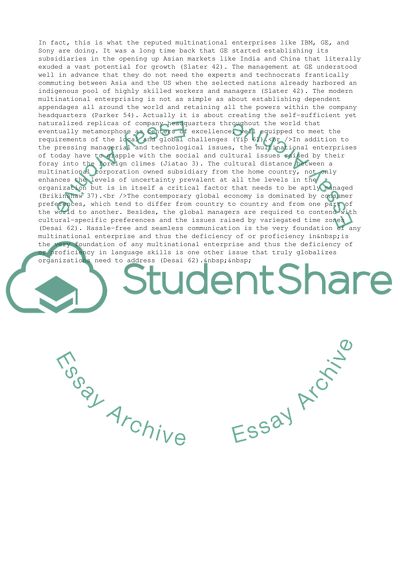Cite this document
(Current Global Economic Conditions and Organizational Forms Essay Example | Topics and Well Written Essays - 1250 words, n.d.)
Current Global Economic Conditions and Organizational Forms Essay Example | Topics and Well Written Essays - 1250 words. https://studentshare.org/management/1552588-2-discuss-the-differences-between-multidomestic-global-and-transnational-mnes-explain-what-form-in-your-opinion-is-more-conducive-to-current-global-economic-conditions-and-what-form-is-more-suitable-for-consulting-companies
Current Global Economic Conditions and Organizational Forms Essay Example | Topics and Well Written Essays - 1250 words. https://studentshare.org/management/1552588-2-discuss-the-differences-between-multidomestic-global-and-transnational-mnes-explain-what-form-in-your-opinion-is-more-conducive-to-current-global-economic-conditions-and-what-form-is-more-suitable-for-consulting-companies
(Current Global Economic Conditions and Organizational Forms Essay Example | Topics and Well Written Essays - 1250 Words)
Current Global Economic Conditions and Organizational Forms Essay Example | Topics and Well Written Essays - 1250 Words. https://studentshare.org/management/1552588-2-discuss-the-differences-between-multidomestic-global-and-transnational-mnes-explain-what-form-in-your-opinion-is-more-conducive-to-current-global-economic-conditions-and-what-form-is-more-suitable-for-consulting-companies.
Current Global Economic Conditions and Organizational Forms Essay Example | Topics and Well Written Essays - 1250 Words. https://studentshare.org/management/1552588-2-discuss-the-differences-between-multidomestic-global-and-transnational-mnes-explain-what-form-in-your-opinion-is-more-conducive-to-current-global-economic-conditions-and-what-form-is-more-suitable-for-consulting-companies.
“Current Global Economic Conditions and Organizational Forms Essay Example | Topics and Well Written Essays - 1250 Words”. https://studentshare.org/management/1552588-2-discuss-the-differences-between-multidomestic-global-and-transnational-mnes-explain-what-form-in-your-opinion-is-more-conducive-to-current-global-economic-conditions-and-what-form-is-more-suitable-for-consulting-companies.


